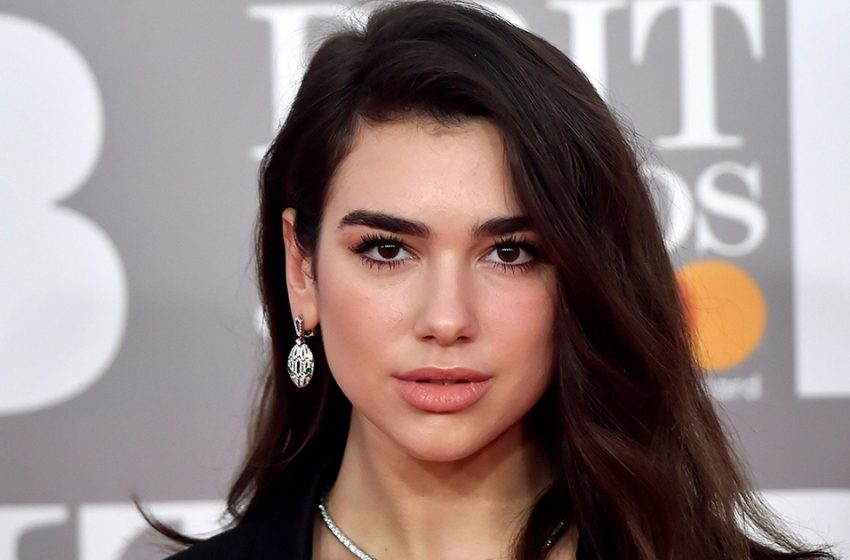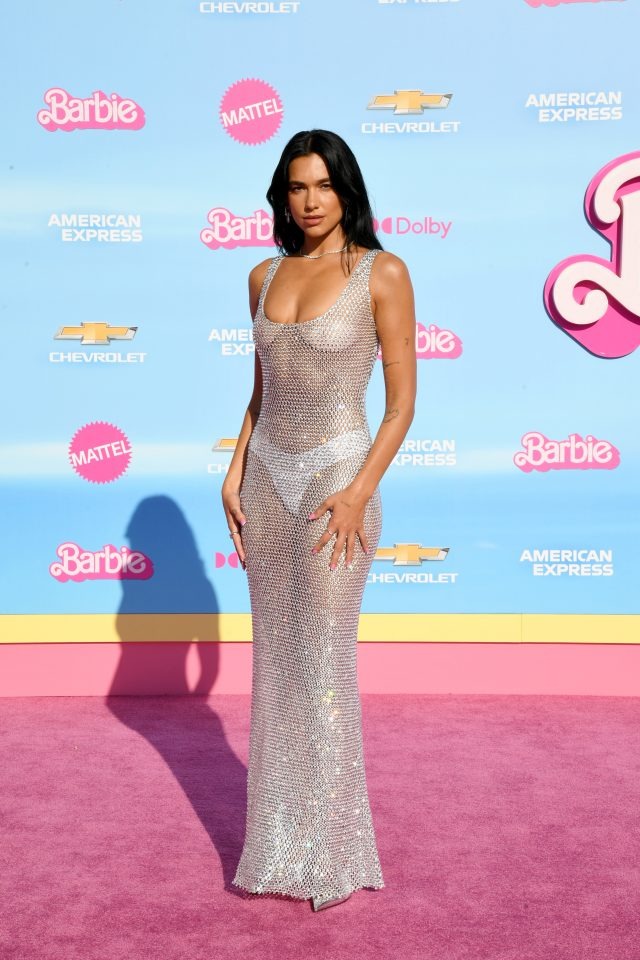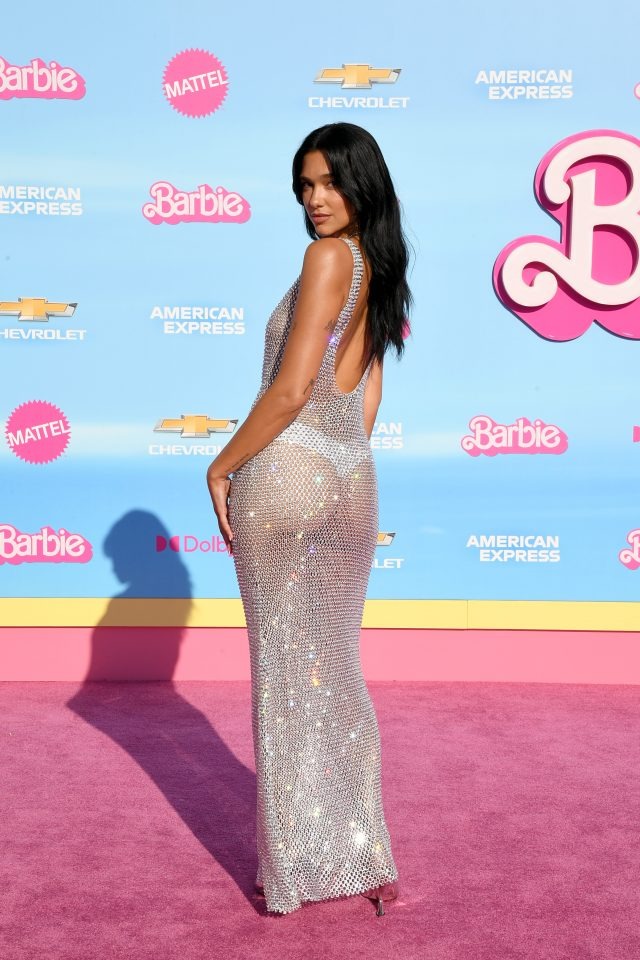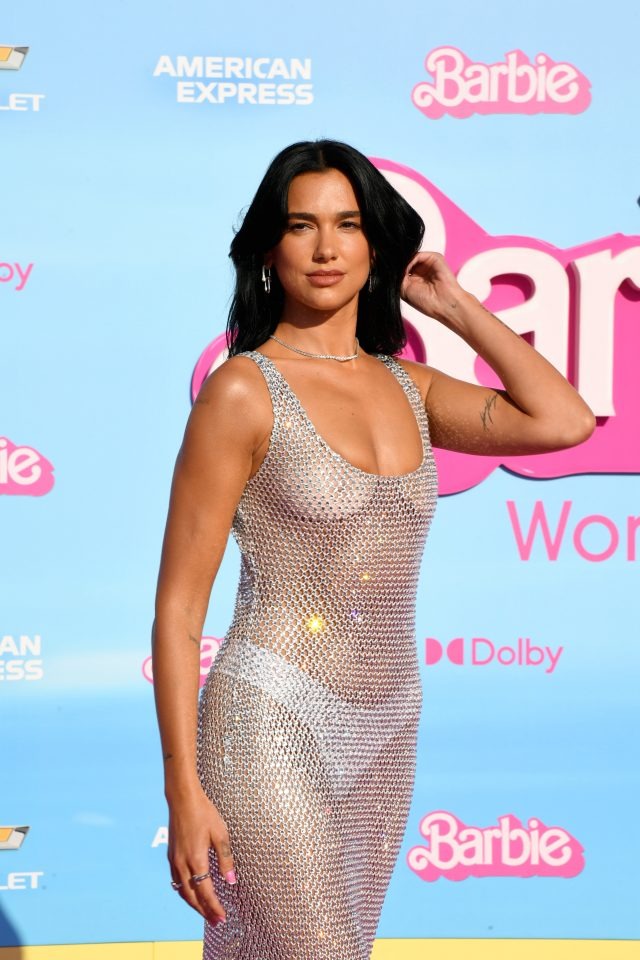There’s a saying in fashion circles that if someone earned money each time a transparent or sheer outfit made headlines, they’d be quite wealthy by now. In recent years, the trend has escalated to a point where every fashion review, red carpet recap, and influencer highlight seems to feature translucent fabrics and see‑through styling. From casual streetwear to red carpet events, sheer garments have become both ubiquitous and controversial—and nowhere has that tension been clearer than in the recent media storm surrounding Dua Lipa’s outfit at the Barbie film premiere.

Dua Lipa’s Bold Premiere Look
At the Barbie premiere in Los Angeles, Dua Lipa turned heads in a daring ensemble: a collared, nude-toned Bottega Veneta dress crafted from sheer material, layered only with white undergarments underneath. To elevate the look, she paired it with metallic heels and silver accessories. Far from subtle, the outfit leaned into bold transparency—visually striking, fashion-forward, and, unsurprisingly, conversation-provoking.
Public Backlash and the “Barbie is for Children” Argument
Almost immediately, a portion of the public and online commentators criticized the choice. Some questioned the appropriateness of such a revealing ensemble for an event tied to a film rated 12+, suggesting it clashed with the family-friendly associations many have with the Barbie franchise. “Barbie is for kids,” they argued—and an outfit like this, they contended, felt out of place.
This critique reflects larger anxieties about sexuality in mass media—especially when the media is tied to a legacy children’s brand. Social media forums filled with comments lamenting the perceived disconnect between sexualized fashion and the supposed innocence of a movie based on a toy line.

Why the Criticism Misses the Point
However, these objections miss a deeper nuance: the Barbie film, helmed by Greta Gerwig, was never meant to be a children’s movie in the traditional sense. While it draws inspiration from a toy line, the aesthetic, tone, and writing are decidedly oriented toward a grown-up audience. The resurgence of barbiecore—the bold, pastel-driven fashion movement partially fueled by the film’s marketing—underscores that fact.
Gerwig’s version of Barbie is self-aware, satirical, and layered, offering commentary on identity, feminism, and media expectations. Stylists and costume designers leaned into both the nostalgia of vintage Barbie fashion and contemporary runway trends. Margot Robbie famously appeared at a separate promotional event channeling the original 1960s doll look. It was clear: this was not a children’s storybook adaptation but a full‑blown cultural statement.
Fashion as Expression, Not Just Modesty
Celebrity fashion often walks a fine line between self-expression and social expectation. A sheer dress does not inherently equate to inappropriateness; rather, it reflects a choice—of identity, of message, of style. When a star like Dua Lipa wears a see-through dress to a premiere, it’s likely to be part of a broader aesthetic or branding decision.
Throughout fashion history, sheer garments have been used to explore themes of transparency, body art, and empowerment. See‑through fabrics show rather than hide; they can be both revealing and concealing, offering a form of visual paradox. The conversation becomes not about whether the outfit is sexy, but whether it is expressive—and what statement it’s making.

What the Barbie Controversy Reveals About Beauty Standards
Criticism over Lipa’s Barbie look also exposes how expectations around female appearance and aging can intersect. Even if a film carries a PG rating, celebrities are judged not only for their work but for their clothes—more so, perhaps, than their male counterparts. This double standard pushes many female stars toward either radical concealment or sensational exposure, neither of which feels entirely fair.
By embracing this sheer outfit, Lipa challenged the narrative that “Barbie is only for children,” suggesting that its audience—and by extension the film itself—should be taken seriously as a piece of adult pop culture.

Who Is Barbie Really For?
Let’s revisit the rating: Barbie was rated PG‑13 in the United States. For audiences of 12–17 and older, core themes—identity, feminism, oppressive stereotypes—are front and center. Costume design is intentional in that film: oversize pink suits, glitter, 80s pastels, exaggerated silhouettes. The choice to wear a nude-tone sheer dress at the premiere aligns with this deliberate design language—it blends high fashion with a commentary on ideas of exposure and still maintaining control.
The Broader Fashion Conversation
Ultimately, the conversation about sheer dresses reflects larger cultural values. Are women supposed to dress down as they age? Or are they allowed to continue experimenting, playing with their image, and wearing modern trends—regardless of public expectation?
Dua Lipa’s look wasn’t intended for children’s programming; it was designed for adults watching Barbie as a nostalgic yet subversive work of cinema. Fashion has always had the power to provoke, inspire, and challenge assumptions. When the celebrity in question is doing so with intention and context, the reaction says as much about societal discomfort with evolving norms as it does about couture choices.

Final Thoughts
At the end of the day, “Barbie” is not just a childhood memory—it’s a cultural icon reimagined for the present. If the film asks us to reconsider what that brand means, celebrity red-carpet fashion—like Lipa’s sheer ensemble—can be part of that same re-examination.
Instead of asking whether such fashion belongs at Barbie, perhaps we should ask how Barbie belongs in our cultural conversation today. If reinvention is as much about attitude as it is about appearance, then wearing a see-through dress at 78—or at 28—is just another form of expression.
The narrative holds: fashion and age, identity and nostalgia, all intersect here in a way that proves relevance isn’t dictated by number. It’s earned by intention.